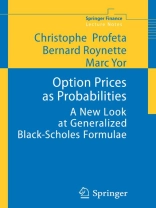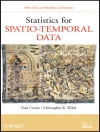Discovered in the seventies, Black-Scholes formula continues to play a central role in Mathematical Finance. We recall this formula. Let (B , t? 0; F , t? 0, P) – t t note a standard Brownian motion with B = 0, (F , t? 0) being its natural ?ltra- 0 t t tion. Let E := exp B? , t? 0 denote the exponential martingale associated t t 2 to (B , t? 0). This martingale, also called geometric Brownian motion, is a model t to describe the evolution of prices of a risky asset. Let, for every K? 0: + ? (t) :=E (K?E ) (0.1) K t and + C (t) :=E (E?K) (0.2) K t denote respectively the price of a European put, resp. of a European call, associated with this martingale. Let N be the cumulative distribution function of a reduced Gaussian variable: x 2 y 1 ? 2 ? N (x) := e dy. (0.3) 2? ?? The celebrated Black-Scholes formula gives an explicit expression of? (t) and K C (t) in terms of N : K ? ? log(K) t log(K) t ? (t)= KN ? + ?N ? ? (0.4) K t 2 t 2 and ? ?
Tabla de materias
Reading the Black-Scholes Formula in Terms of First and Last Passage Times.- Generalized Black-Scholes Formulae for Martingales, in Terms of Last Passage Times.- Representation of some particular Azéma supermartingales.- An Interesting Family of Black-Scholes Perpetuities.- Study of Last Passage Times up to a Finite Horizon.- Put Option as Joint Distribution Function in Strike and Maturity.- Existence and Properties of Pseudo-Inverses for Bessel and Related Processes.- Existence of Pseudo-Inverses for Diffusions.












